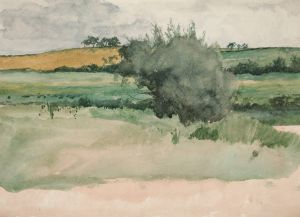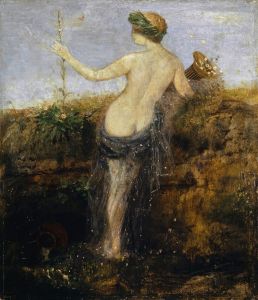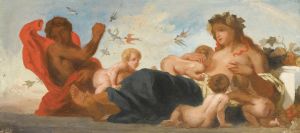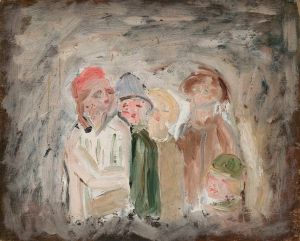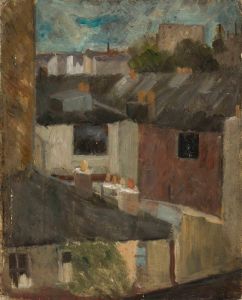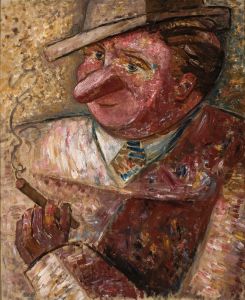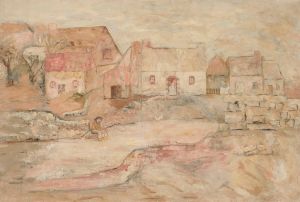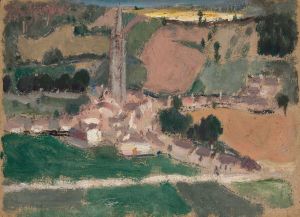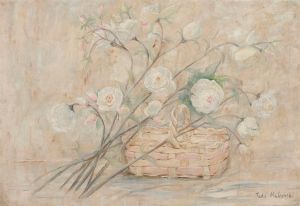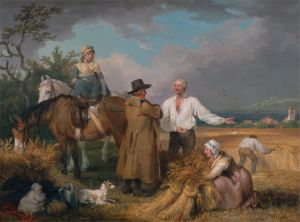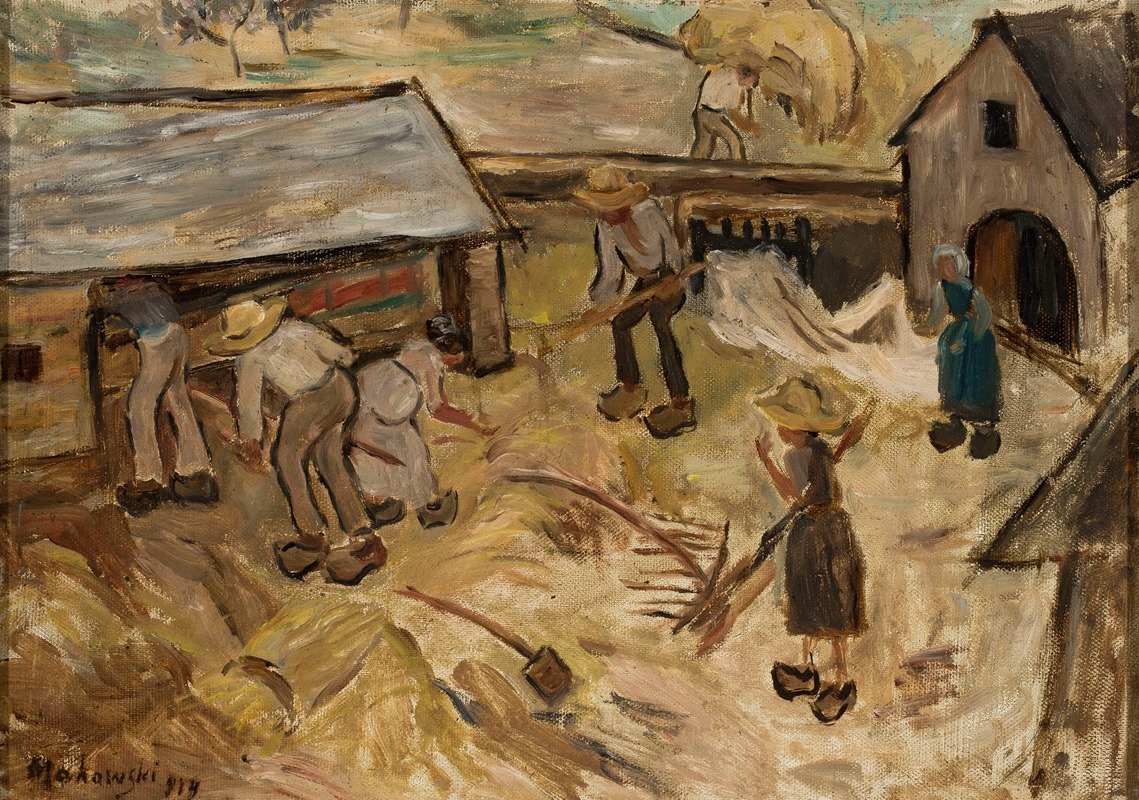
Żniwa
A hand-painted replica of Tadeusz Makowski’s masterpiece Żniwa, meticulously crafted by professional artists to capture the true essence of the original. Each piece is created with museum-quality canvas and rare mineral pigments, carefully painted by experienced artists with delicate brushstrokes and rich, layered colors to perfectly recreate the texture of the original artwork. Unlike machine-printed reproductions, this hand-painted version brings the painting to life, infused with the artist’s emotions and skill in every stroke. Whether for personal collection or home decoration, it instantly elevates the artistic atmosphere of any space.
Tadeusz Makowski was a Polish painter known for his unique style that combined elements of folk art with modernist influences. Born in 1882 in Oświęcim, Poland, Makowski initially studied classical philology before turning to art. He attended the Academy of Fine Arts in Kraków, where he was influenced by the Young Poland movement, which sought to bring modernist ideas to Polish art and literature. In 1908, Makowski moved to Paris, where he became part of the vibrant artistic community and was influenced by the works of artists such as Paul Cézanne and the Cubists.
Żniwa, which translates to "The Harvest" in English, is one of Makowski's notable works. Painted in 1929, this piece reflects Makowski's fascination with rural life and traditional Polish customs. The painting captures the essence of a harvest scene, a common subject in Polish art that symbolizes abundance, community, and the cyclical nature of life. Makowski's depiction of the harvest is characterized by his distinctive style, which often includes simplified forms, a muted color palette, and a sense of whimsy.
In Żniwa, Makowski employs a combination of geometric shapes and soft lines to create a composition that is both structured and fluid. The figures in the painting are stylized, with rounded forms and expressive faces that convey a sense of joy and camaraderie. This approach is typical of Makowski's work, where he often portrayed children and rural scenes with a sense of innocence and nostalgia. The use of earthy tones in the painting reflects the natural landscape and the warmth of the harvest season.
Makowski's time in Paris exposed him to various artistic movements, including Cubism and Fauvism, which influenced his approach to form and color. However, he maintained a strong connection to his Polish roots, often drawing inspiration from folk art and traditional themes. This blend of influences is evident in Żniwa, where the modernist techniques are harmoniously integrated with the depiction of a quintessentially Polish subject.
Throughout his career, Makowski's work was celebrated for its originality and emotional depth. He exhibited widely in France and Poland, gaining recognition for his ability to capture the spirit of rural life with a modern sensibility. Żniwa is a testament to Makowski's skill in merging the old with the new, creating a timeless piece that resonates with viewers through its simplicity and charm.
Tadeusz Makowski passed away in 1932, but his legacy continues to be appreciated in the art world. His works are held in various collections, including the National Museum in Warsaw and the Musée National d'Art Moderne in Paris. Żniwa remains an important part of his oeuvre, exemplifying his unique artistic vision and his contribution to the development of modern Polish art.





